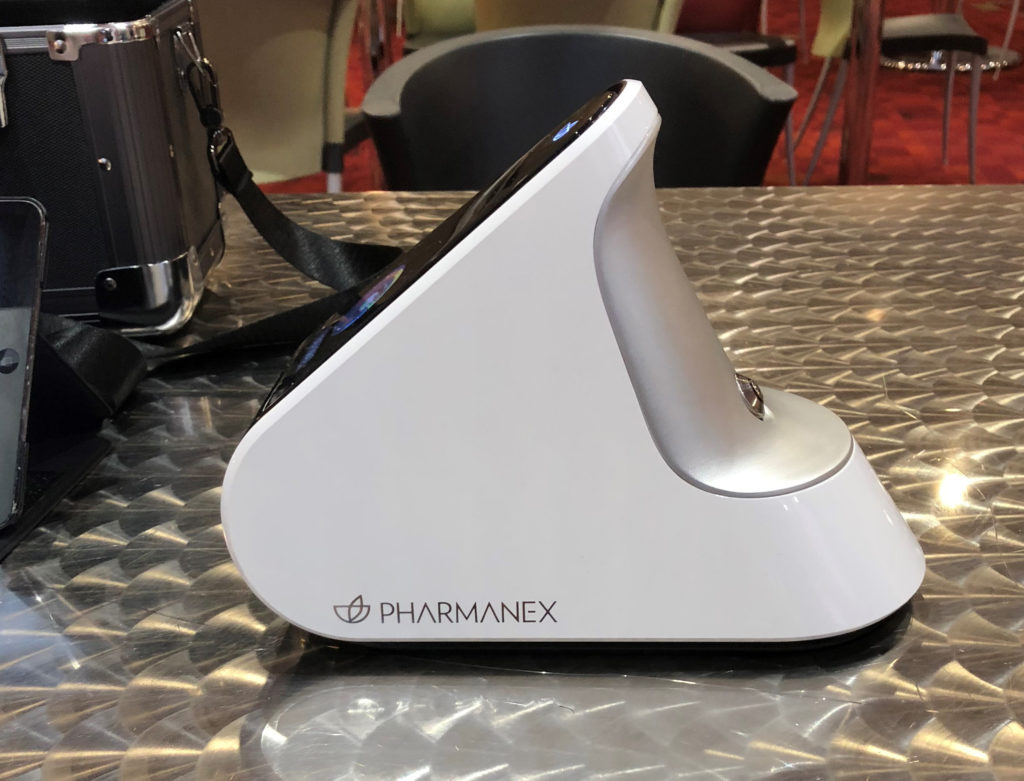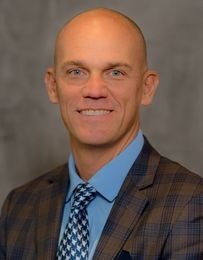By Andrew Feltz, OD

July 18, 2018
Patients care about the wellness of their eyes, but they also care about their overall wellness. A new diagnostic tool, the biophotonic scanner from Pharmanex, for which I am clinical director, has given me a way to quickly assess the level of disease-fighting nutrients in my patients’ bodies.
I can then tie the importance of those nutrients to the prevention of eye diseases like macular degeneration, and direct the patient to order beneficial nutraceuticals.

The biophotonoic scanner from Pharmanex on display at SECO. Dr. Feltz says the system allows doctors to take a noninvasive scan of the level of disease-fighting nutrients in end organ tissue.
How Does it Work?
A patient just places their hand, palm down, on the scanner, and keeps it there for about half a minute while the instrument, which provides a carotenoid antioxidant assessment, takes its reading.
Funded by a grant from the National Institutes of Health, and developed at the University of Utah, the instrument was designed to screen for risk factors of macular degeneration, with a blue laser focused on the macula to measure lutein and zeaxanthin concentrations. The device was then re-engineered to use human skin to generate a health biomarker called a “skin carotenoid score.”
A recent study published in Investigative Ophthalmology and Visual Science showed that the skin carotenoid score correlates with concentrations of carotenoids in the macula, and also in the blood.
Macular degeneration is the number one cause of blindness in the western world, and the best treatment is prevention. Carotenoid supplementation is the standard of care for macular degeneration patients.
ODs have been counseling their patients for years on nutrition and eye health. The ability to measure a patient’s carotenoid status in 30 seconds non-invasively allows us to create awareness and track progress for our patients rather than blindly recommending supplements without measuring absorption. Additionally, we can now track if a patient’s change in diet, lifestyle and supplementation is making a difference in the level of nutrients in their tissue.
I have had encouraging results using the system, and related nutritional counseling, in my own practice. One of my patients, a 55-year-old woman with a family history of ARMD, who failed a dark adaptation test, scored low on our antioxidant scan. After three months of nutritional therapy, she passed the dark adaption test, and her score from the scan increased nearly 20 points.
How Much Does it Cost?
Upfront investment for the scanner is $3,395. This includes sample nutraceutical products for doctors, staff and patients. There is a monthly maintenance agreement of $120 which provides for device, service contract, software upgrades and insurance. This also includes the consulting team from OnSight Wellness to ensure successful practice integration.
What’s the ROI?
The ROI is strong, at around 10x in year one. There are two revenue streams: scan revenue and supplement revenue. The average practice that has implemented the system generates around $35,000 in cash profit in year one. There are no inventory requirements as the nutraceutical products are direct-shipped to the patient.
Typically, an OD will scan anywhere between 30-80 percent of patients per day and charge $20 for the test. About 20-25 percent of those will commit to take the supplements at that time.
Have the Conversation with Patients
We talk with patients about the things that make the score lower like stress, inadequate sleep, smoking and excessive UV exposure, and we talk about the things that raise their score, such as a diet high in colorful fruits and vegetables, healthy weight, exercise and nutraceuticals.
Most patients have heard this before, but seeing their score with a color chart makes it more real. They seem to process these concepts more readily after their scan.
We relate to them that their score tells us how much protection they have in their macula to fight off chronic diseases like macular degeneration.
How it Helps You Build Your Practice
Wellness is a trigger word for patients, especially for those between 35-60 years old. They want healthcare providers to be proactive and on the cutting edge of technology and innovation. This test gets patients’ attention, and is something they will tell their friends about.
The other part about the program which is attractive to private practice optometry is that patients on the program are eligible to come back for free re-scans to check their levels every quarter. This doesn’t need to take up chair time as the test is simple to administer and very quick. These patients stay more connected to the office, and may look at eyewear or contact lens reorders while in the office.
 Andrew D. Feltz, OD, practices at Professional Eye Care at Westar in Westerville, Ohio, and clinical director of the OnSight Wellness system.
Andrew D. Feltz, OD, practices at Professional Eye Care at Westar in Westerville, Ohio, and clinical director of the OnSight Wellness system.





















